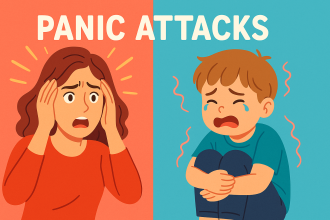Panic disorder is a frequently occurring condition that can be effectively treated. It affects children and teenagers by causing sudden, repeated episodes of intense fear or discomfort, often accompanied by physical symptoms like a rapid heartbeat or difficulty breathing. These episodes, referred to as "panic attacks," generally last only a few minutes and tend to strike without warning.
During a panic attack, the individual may feel an overwhelming sense of fear, as though something terrible is about to happen. Physical sensations may include a pounding or racing heart, dizziness, shortness of breath or the sensation of suffocating, and shaking or trembling. Many also report a feeling that the situation is bizarre or unreal, and they may experience intense fears—such as a fear of dying, losing control, or going crazy.
These attacks can significantly interfere with a young person's life. They may affect relationships, performance in school, and overall emotional and developmental well-being. In more serious cases, children and adolescents with panic disorder may also struggle with major depression and may be at higher risk of suicidal thoughts or behaviors. In an attempt to manage their anxiety, some teens may turn to alcohol or drugs, which can worsen the problem.
With an accurate diagnosis and the right treatment plan, panic disorder can usually be managed successfully. Initially, a child or teen experiencing symptoms should be examined by a primary care doctor or pediatrician to rule out any medical conditions. If no physical cause is found, they should then be referred to a child and adolescent psychiatrist for a comprehensive mental health evaluation.
Several treatment options are available and effective. Specific medications can help prevent or reduce panic attacks. Additionally, psychotherapy provides essential support by helping both the child and their family understand and manage anxiety. Cognitive behavioral therapy (CBT) is especially useful, teaching practical strategies for recognizing and responding to the signs of anxiety or a panic attack in real time.

